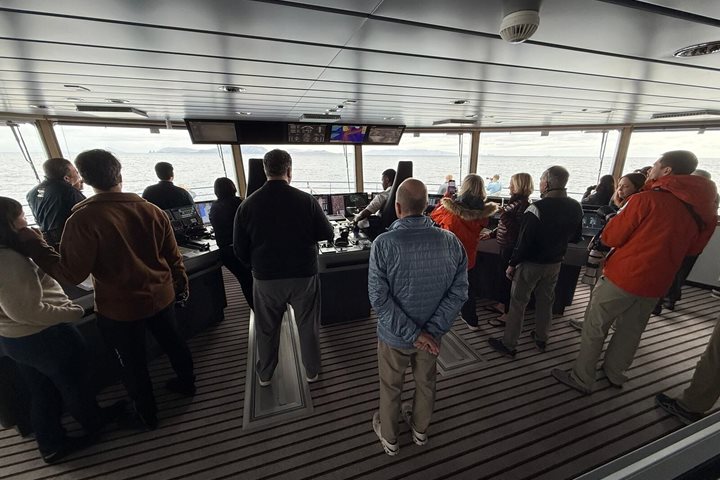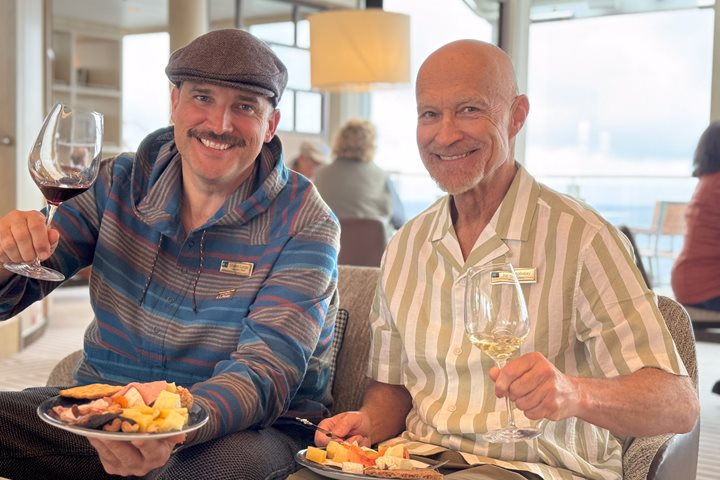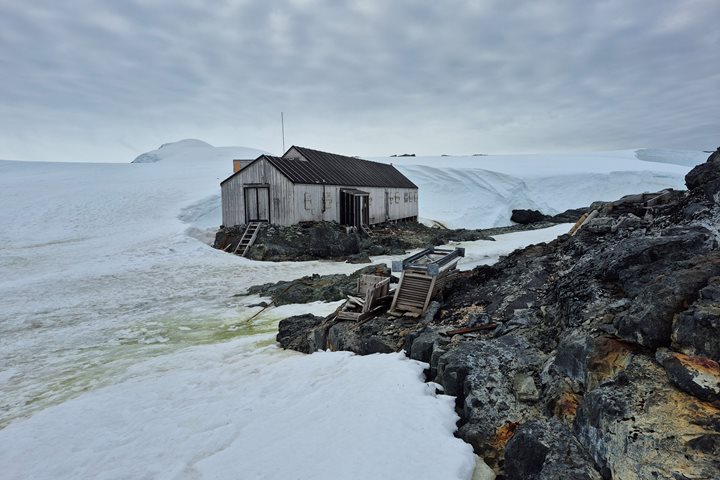With our bow pointed north, the National Geographic Explorer continued its departure from the Antarctic Peninsula. With gratitude, our guests found the Drake Passage to be much kinder than originally experienced on our initial crossing. This allowed for a mingling of photographers to share and reflect on the photos that were achieved during our expedition, as well as long views of the Southern Ocean as it rolled around us.
Due to the favorable weather, we were treated to a rare approach to the very bottom of the South American continent. Cape Horn is an area of myth and legend where many sailors have made a name or a grave for themselves in an attempt to round her. With some blustery winds, our vessel nosed in achieving views of the albatross monument that stands in recognition of the lives lost and the legend of the albatross who carried their souls onto the next world.
After lunch, we were treated to two discussions by our team of naturalists. The first by Gabriella Roldan speaking of the lives and history of the natives of Tierra del Fuego, and the second by our guest speaker Joe McConnell talking in detail about the processes currently effecting our atmosphere.
As always when travelling these waters, our vessel was swarmed by seabirds. Black browed albatrosses and pintado petrels soared effortlessly next to our windows and close off our bow. Humpback whales flanked us, spouting in the distance, and we even saw the large black dorsal fin of a male killer whale in parallel with our track.
It is difficult to summarize experiences such as these. Who we are now is entirely different than who we were when we first set sail. The White Continent transforms anyone who has the privilege of visiting her. In the months to come, we will all reflect on our time here and if fortune favors, perhaps one day we will return.







